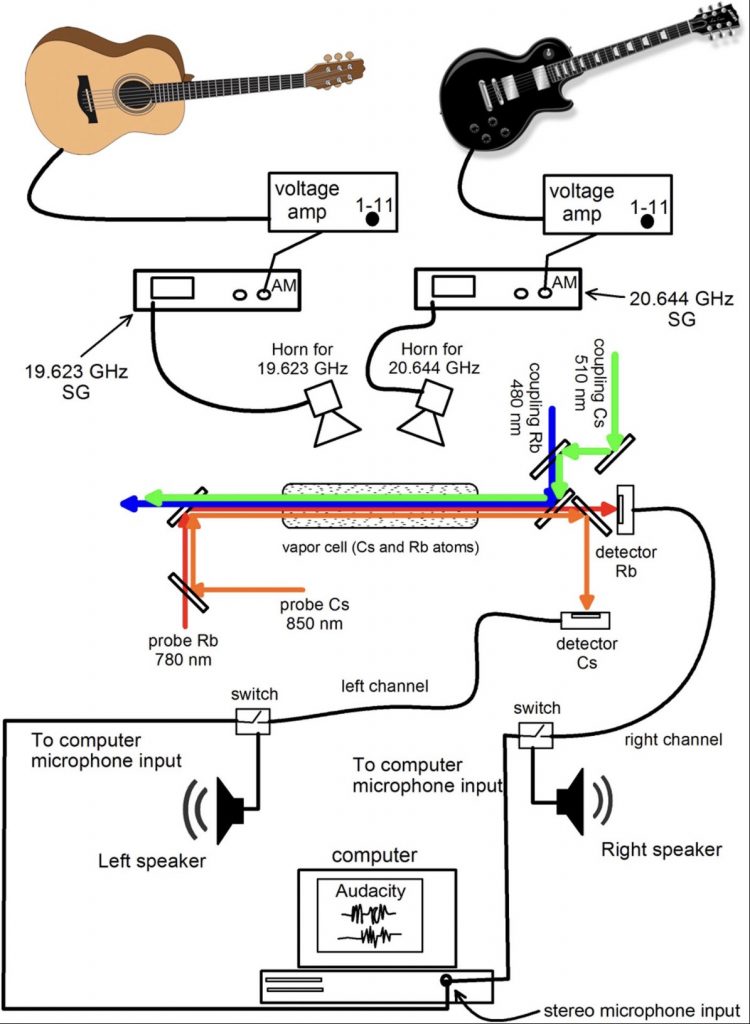
A two-channel atomic radio receiver. A mixture of cesium and rubidium is excited to Ryberg states and probed for changes in optical transparency at two different frequencies with lasers of different wavelengths. Source: C.L. Holloway, M.T. Simons, A.H. Haddab, C.J. Williams, and M.W. Holloway, AIP Advances 9, 065110 (2019). https://doi.org/10.1063/1.5099036
Many thanks to SWLing Post contributor, Paul W4/VP9KFPaul W4/VP9KF, who writes:
A very exciting radio! One that depends on excited atoms, of a sort…
(Source: Hackaday)
The basic technology of radio hasn’t changed much since an Italian marquis first blasted telegraph messages across the Atlantic using a souped-up spark plug and a couple of coils of wire. Then as now, receiving radio waves relies on antennas of just the right shape and size to use the energy in the radio waves to induce a current that can be amplified, filtered, and demodulated, and changed into an audio waveform.
That basic equation may be set to change soon, though, as direct receivers made from an exotic phase of matter are developed and commercialized. Atomic radio, which does not rely on the trappings of traditional radio receivers, is poised to open a new window on the RF spectrum, one that is less subject to interference, takes up less space, and has much broader bandwidth than current receiver technologies. And surprisingly, it relies on just a small cloud of gas and a couple of lasers to work.
Tuning into Atomic Radio: Quantum Technique Unlocks Laser-Based Radio Reception

